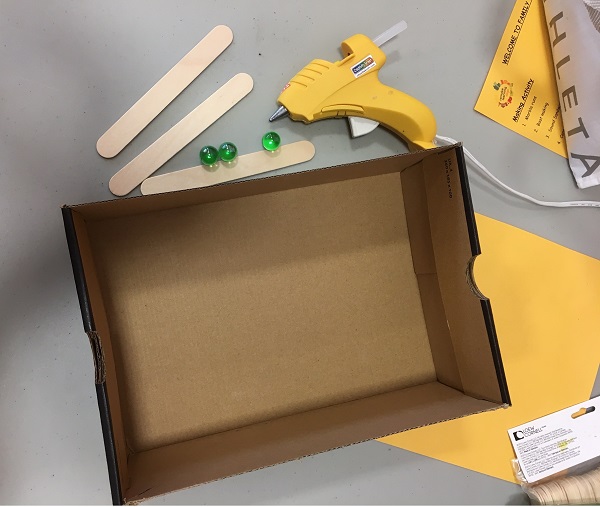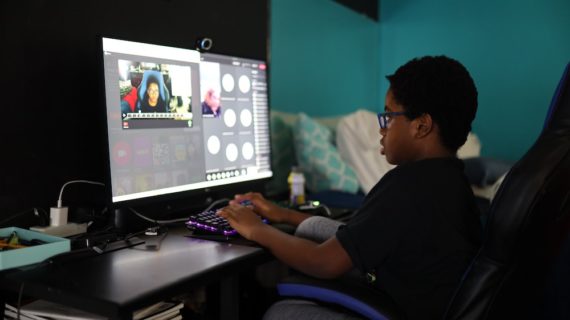
Parents’ Ultimate Guide to TikTok
Photo above by Solen Feyissa on Unsplash.
Is TikTok safe? How does it work? Can I do a duet with my kid? Recently the platform has come under heat for national security concerns, but for now, it remains wildly popular with adults — and kids. If you are using TikTok, you’ll find everything you need to know about this popular video-sharing app below.
What is TikTok?
TikTok is a social network for sharing user-generated videos, mostly of people lip-synching to popular songs. Users can create and upload their own videos, many of which feature people lip-synching to popular songs. You can also browse and interact with other users’ content, which covers a wide range of topics, songs, and styles. These videos can be grouped by hashtags, which often correspond to challenges, memes, or current events (like #pandemiclife).
How safe is TikTok?
Using any social network can be risky, but it’s possible for kids to safely use the app with adult supervision (and a private account). TikTok has different rules for different ages:
- Users under age 13 can’t post videos or comment, and content is curated for a younger audience.
- For kids age 13 to 15, accounts are private by default. Only friends can comment on videos, and other users can’t duet (explained below) with your videos.
- Only users age 16 and over can livestream and use direct messaging, and only users over 18 can buy, send, or receive virtual gifts.
TikTok also offers some tools for parents and caregivers to limit how much time kids spend on the app and what kids can see. Parents and caregivers can also use Restricted Mode to reduce mature content, or Family Safety Mode to pair their account with their kid’s account to control settings completely.
How does TikTok work?
TikTok users sign up with a phone number, an email address, or a third-party account such as Facebook and Instagram. Once logged in, you can find videos by searching for popular creators, categories (like comedy, animals, sports), and hashtags. Or you can use your phone contacts or social media followers to find friends already on the app. Many kids on TikTok like to create videos, but plenty of people don’t post themselves—they just use the app to find and follow content creators.
Is TikTok appropriate for kids?
TikTok can be a kid-friendly experience if you supervise your kids, use safety settings, and stick to songs you already know. But TikTok’s emphasis on popular music means many videos include swearing and sexual lyrics, so it may not be age-appropriate for kids to use on their own. Even with limits, it’s easy to find people wearing revealing clothing and dancing suggestively, although TikTok won’t let you search for objectionable content such as “porn.”
As with social media apps like Instagram and Snapchat, TikTok has a commercial element that encourages people to buy stuff. Users can also earn TikTok Reward points by inviting friends to download the app, and then they can redeem those points for coupons from brands like Sephora and Uber.
What age is TikTok recommended for?
Common Sense recommends the app for age 15+ mainly due to the privacy issues and mature content. TikTok requires that users be at least 13 years old to use the basic TikTok features, although there is a way for younger kids to access the app.
Can kids under 13 use TikTok?
A section of the app that includes additional safety and privacy features is available in the U.S. for kids under 13. In this section, kids can only see curated, clean videos, and aren’t allowed to comment, search, or post their own videos. However, the lack of these features makes it unappealing for most kids. And bypassing that section only requires entering a false birth date, so it’s not perfect.
How can you make your TikTok account private?
To make your TikTok account private, go to your profile page and select the three-dot icon in the top-right corner. On the “Settings and privacy” page, tap Privacy. That takes you to the Discoverability page. Toggle the switch for Private Account. On this page, you can also control other safety and privacy features, such as who can send you comments and direct messages, and who can do a duet with you. Using the Friends setting or turning those features off completely limits contact with strangers.
How can I use TikTok with my kids?
You can provide a buffer between kids and iffy content by watching with your kids and making videos together. Offer to hold the camera or turn it around to do a selfie duet. You can post it or save it as “private” so only you can see. The app also lets you share videos by email, text, or other social media apps, where you can better control who sees it.
TikTok introduced the Family Pairing mode in 2022, which lets parents link their account to their kid’s account. It includes the ability to set daily viewing time limits, put a kid’s account on Restricted Mode to limit their exposure to content that may not be appropriate, and turn off their ability to send and receive direct messages. Parents can also disable their kid’s search functionality and prevent other users from seeing which videos their kid has liked.
How do you do a duet on TikTok?
TikTok has a feature that allows two users who aren’t in the same place to perform a duet. One user creates and posts a video, and then a mutual follower can tap the three-dot icon at the bottom right of the video and select “start duet now!” The second user can then lip-synch along with the first person, either swapping back and forth or in a split screen.
What are TikTok challenges?
Challenges are any idea that goes viral. They can be songs, activities, or dances that start trending and then get copied by users on the platform. Sometimes they’re spontaneous, but sometimes they’re planned out by brands, musical artists, or influencers for marketing purposes.
Most of the popular challenges, such as the intricately choreographed dance number Renegade and pranks such as the backwards hoodie fridge mixup are harmless. But some, such as the skull-breaker, are really dangerous. Learn more about viral internet stunts and how to talk to your kid about them.
Does TikTok have parental controls?
TikTok offers a few ways for parents and caregivers to manage kids’ accounts. You can enable time limits and the content filter on your kid’s phone and protect the settings with a passcode. Or you can download TikTok, create your own account, and use the Family Pairing feature to manage your kid’s TikTok settings using your phone. (If you choose Family Pairing, you’ll need your kid’s phone to sync the settings.)
Here’s how to enable screen limits and filter content on your kid’s phone: Go to your kid’s TikTok account within the app and tap the three dots at the top right of the user profile. Then select “Digital Wellbeing” next to the icon of an umbrella. From there, select the features you want to enable:
Screen Time Management. This setting limits users’ time in the app per day. If you’re only enabling this on your kid’s phone, choose a passcode to lock the setting.

Restricted Mode. This blocks mature content, but even with the filter on, kids using the app on their own might come across age-inappropriate videos. Lock the setting with a passcode.
To set up Family Pairing so you can manage the above settings, plus safety and privacy, first download TikTok onto your phone and create an account. Then, make sure you have your kid’s phone and their TikTok login handy.
Family Pairing. On both phones, tap the three dots next to the user profile. Then tap Family Pairing and sync your account with your kid’s via the QR code.
Keep in mind that kids can always re-download TikTok and create a new account using a different phone number or email address, so any controls you enable aren’t foolproof.
How can I monitor my kid’s activity on TikTok?
The app’s controls seem to be geared more toward limiting kids’ access to virtual gifts that can be bought with real money, instead of giving parents regular monitoring capabilities. Restricted Mode was designed to prevent kids from seeing mature content—provided they don’t independently try to seek it out—and adults can sign up for an account and then link it to their kid’s account via the Family Pairing mode. Kids will need to accept their parents’ request to connect the accounts. If they do, parents can set up a number of limitations, such as disabling the direct message option and setting daily time limits.
What if my kid wants to get famous on TikTok?
While the safest way to use TikTok is with a private account, the social nature of the app and the rapid success of some of its stars — including Charli D’Amelio, a dancer whose TikTok fame led to a TV deal — might have your kids begging to go public. There’s huge enticement to get famous, including TikTok houses where groups of young creators live, make videos, and potentially reap big-money endorsements and sponsorships. Kids familiar with these examples might be persuaded to do or share things they wouldn’t normally do to get a larger audience. They may also become obsessed with likes and virtual approval, which isn’t healthy for their emotional well-being. Parents can manage this by encouraging and modeling safe behavior, and putting limits on the type of information that kids share.
Should I be concerned about TikTok’s security?
Many people and organizations—including the U.S. government and companies like Wells Fargo—are worried that TikTok’s parent company ByteDance (based in China) is using the app to spy on users in other countries. Investigations of TikTok found that the app’s privacy policy and data collection practices aren’t actually any worse than other social media apps, and that the concerns about spying are probably overblown. (However, the company does surveil users of the app in China.)
That said, TikTok doesn’t necessarily have a perfect record when it comes to privacy and security. For example, they only recently fixed a bug that allowed the app to access users’ clipboards (where things you copy and paste are stored) every three seconds, even when they weren’t using the app. They also illegally stored minors’ data.
Read Common Sense Media’s full review of TikTok, and learn more about this popular platform. And to see this guide in Spanish, click here.
















